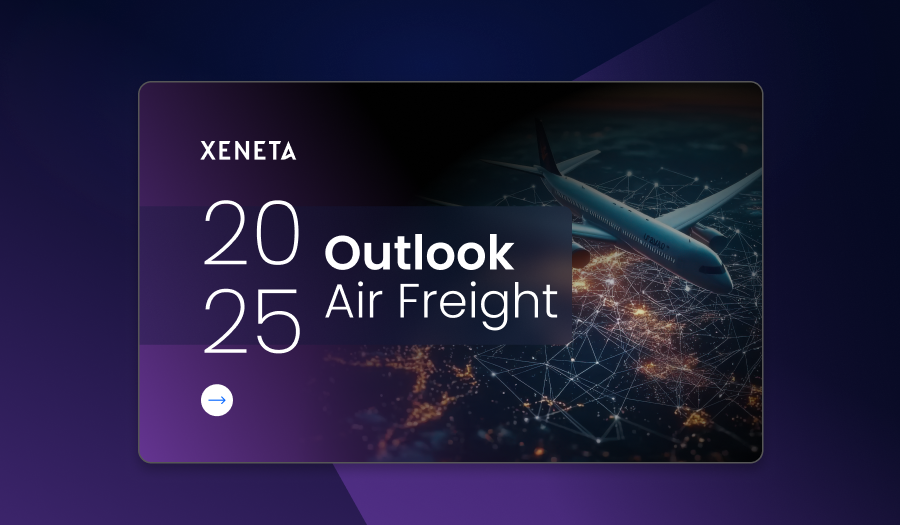How can procurement professionals manage ocean container shipping budgets in an age of intense geo-political turmoil and uncertainty?
The market has been hugely volatile in 2024 in the wake of the Red Sea conflict, and the situation is set to become even more challenging with industry figures warning of further threats to global ocean supply chains.
The Financial Times published a story yesterday, 12 August, on potential geo-political disruptions, which included insight from Emily Stausbøll, Xeneta Senior Shipping Analyst, and Guy Platten, Secretary-General of the International Chamber of Shipping.
Platten warned rising US economic nationalism threatens to undermine world trade, with particular concerns about Donald Trump’s protectionism.
He said: “The world order has never been under such threat since before the second world war. When we last did this, it didn’t work… Trade wars lead to war.”
If the world can expect further geopolitical upheaval, procurement professionals are faced with the seemingly impossible task of managing ocean freight budgets against extreme market dynamics.
An example of the scale of budgeting challenges
To demonstrate the magnitude of this budgeting challenge, we only need to look back at the chaotic market developments during the Red Sea conflict.
The below scenario is used for illustrative purposes and is based on a shipper transporting 5 000 FEU (40ft equivalent container) per month from the Far East to US West Coast, with 50% moved on the spot market and 50% on a long term contract.
Xeneta data, which is based on +450 million crowdsourced data points, shows the monthly cost of transporting these containers exactly one year ago today on 12 August 2023 would have been USD 10 397 500.
At the start of Q4 in October 2023, this figure decreased slightly to USD 9 857 500 - perhaps prompting shippers to project a better financial outlook for 2024, certainly in comparison to 2022.
However, at the start of Q1 2024 the Red Sea conflict was beginning to unfold and the cost had risen to USD 11 155 000.
The Transpacific market reached its first peak following the outbreak of conflict in the Red Sea on 1 February when the cost of transporting these containers would have been USD 16 740 000 – an additional USD 6.3m per month compared to the start of August 2023.
The market rollercoaster was not over. By the start of Q2, the cost of moving these 5 000 containers had fallen to USD 13 327 500. Shippers may have understandably believed they were through the worst of the Red Sea conflict and re-adjusted budgets for a declining market in the remainder of 2024.
This was not the case. The market spiked once again, and even more dramatically than earlier in the year. By the start of Q3, the cost of moving the 5 000 containers had risen to USD 25 667 500.
This is an additional USD 15.27m freight spend per month compared to 12 August 2023.
This situation is now changing once more, with the cost of shipping these containers falling to USD 23 070 000 on 12 August.

Ripple effects across ocean supply chains
The geo-political landscape in 2024 has already dramatically altered the behavior of US and European importers.
Data released by Xeneta and Container Trades Statistics last week reveals ocean container demand from China to North America continued to set records in June as shippers rushed to frontload imports ahead of the traditional peak season in Q3.
This is a point addressed in the Financial Times story by Emily Staubøll, Xeneta Senior Shipping Analyst.
She said: “US businesses still have the chaos of Covid-19 fresh in their minds. If frontloading also helps to mitigate regional supply chain risks, such as potential strike action at ports on the US East and Gulf coasts, and new tariffs on Chinese goods, then you can understand why some US importers have taken this approach.”
Frontloading of imports clearly demonstrates how shippers are taking geopolitical risk into consideration in supply chain resilience, but this must also extend to budget management.
How can procurement professionals manage budgets?
How can a Procurement Manager in the scenario above explain to their Finance Director that a 2024 budget agreed in Q4 2023 needed to be torn up just two months into the new year because costs had increased by USD 6.88 million per month?
The Procurement Manager then needs to re-adjust the budget again two months later when costs fall by USD 3.4 million per month. The budget would then be torn up for a third time when costs rise by an enormous USD 12.34 million per month at the start of Q3.
The only way to explain these extraordinary market dynamics to the Finance Director with any degree of credibility is through data.
The Procurement Manager cannot influence geopolitics or force a large-scale return of container ships to the Red Sea. But they can use data to provide internal scrutiny and re-assurance of freight spend and risk management.
This allows businesses to make the best decision at the right time, ensuring supply chain resilience while also managing freight spend.
This will become even more important in the remainder of 2024 and 2025 as European and US shippers set budgets for next year and enter negotiations for new long term contracts. They need to understand where the risk lies in the market - and the freight rates they need to target to reduce these risks based on their individual business needs.
Effective internal budget processes make meetings with the Finance Director far more data-driven, efficient and productive - allowing the Procurement Manager to focus on the task of supply chain delivery and resilience.






